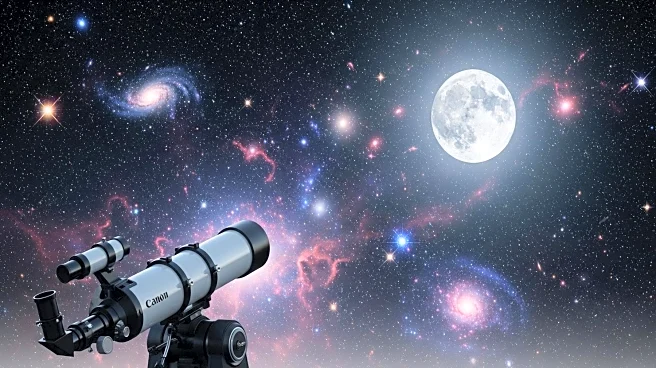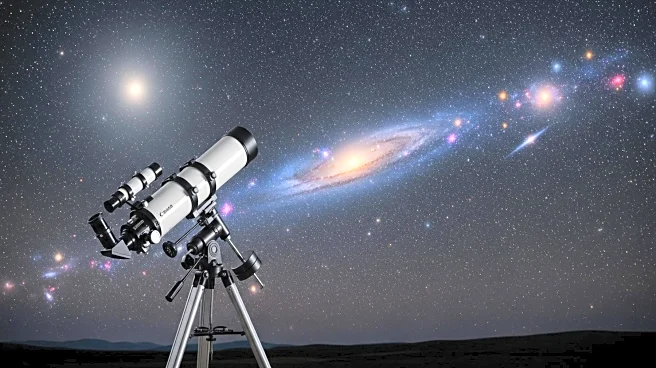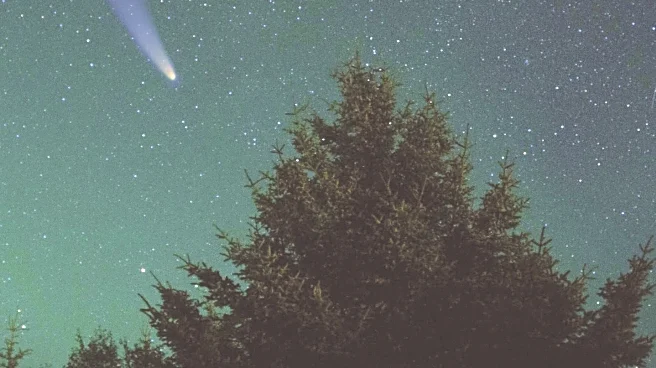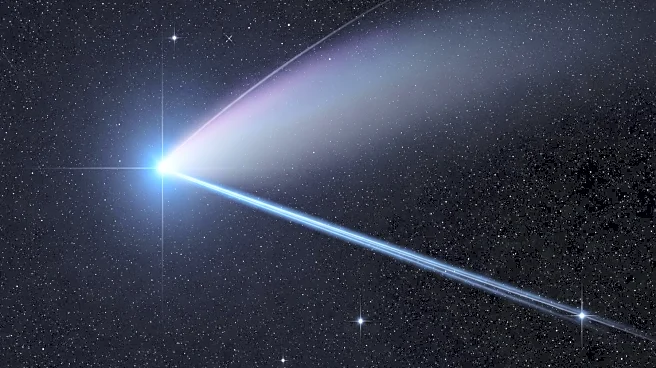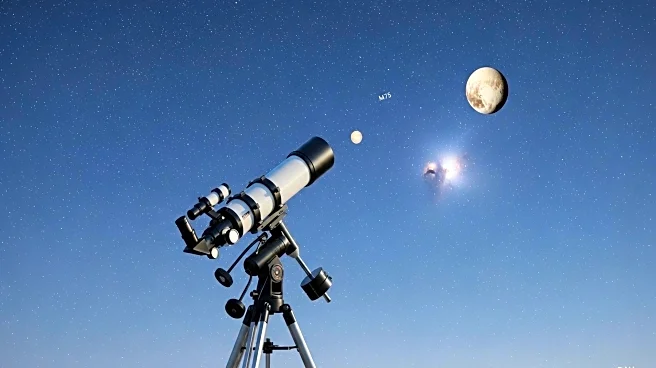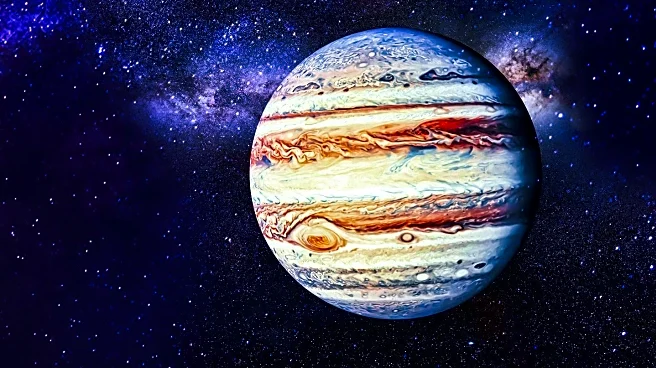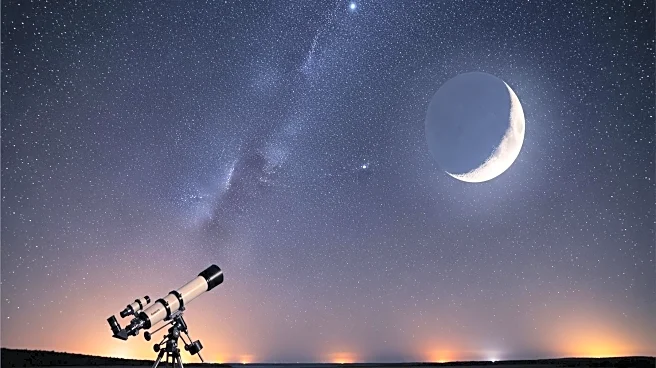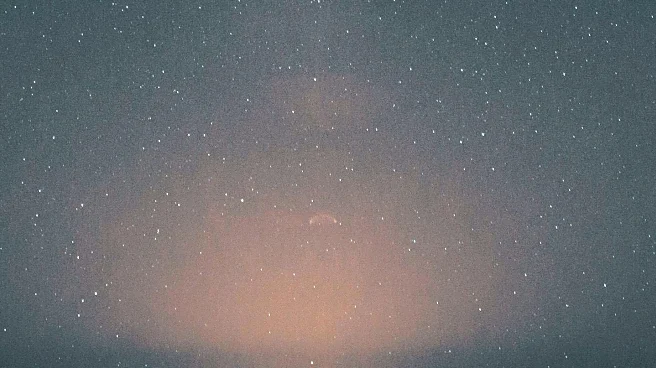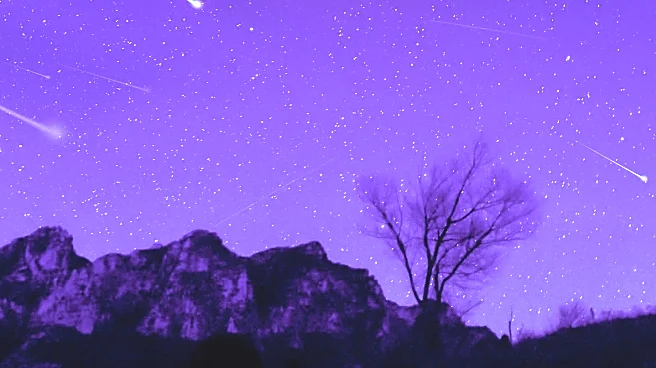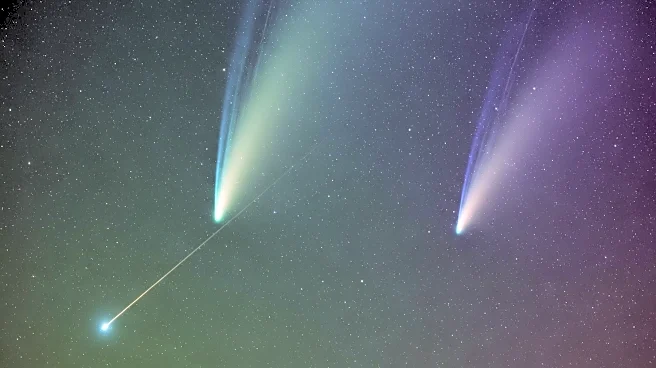What's Happening?
Space.com has published an article detailing eight celestial targets for skywatchers to observe during the autumn of 2025. As the nights grow longer and darker, the northern hemisphere offers a prime opportunity for amateur astronomers to explore the night sky. Key highlights include the constellation Orion, which rises in the east around midnight in mid-October, and the Orionid meteor shower, peaking on October 20-21. The Andromeda Galaxy, visible overhead during October nights, provides a chance to observe the Milky Way's closest neighbor. Additionally, Comet C/2025 A6 (Lemmon) has brightened significantly, offering a potential naked-eye target. Saturn, having recently reached opposition, is another bright target, visible as an 'evening star' above the eastern horizon.
Why It's Important?
The autumn skywatching season presents a unique opportunity for astronomy enthusiasts to engage with the cosmos. Observing these celestial events can enhance public interest in astronomy and science education. The visibility of Comet Lemmon and the Orionid meteor shower may attract both amateur and professional astronomers, fostering community engagement and scientific collaboration. The accessibility of these events, visible through binoculars or the naked eye, democratizes astronomy, allowing broader participation. This increased interest can drive demand for telescopes and related equipment, benefiting the astronomy industry.
What's Next?
As the autumn skywatching season progresses, enthusiasts can anticipate further celestial events. The brightening of Comet Lemmon may continue, potentially becoming a prominent feature in the night sky. The peak of the Orionid meteor shower offers a chance for spectacular viewing, especially in dark sky locations. Astronomy clubs and educational institutions may organize events to capitalize on public interest, promoting science education and community engagement. The visibility of Saturn and other celestial bodies may inspire further exploration and observation, encouraging investment in astronomy equipment and technology.
Beyond the Headlines
The increased interest in skywatching during autumn 2025 could have broader implications for science education and public engagement with astronomy. As more people turn their gaze skyward, there may be a renewed focus on preserving dark sky areas, highlighting environmental concerns related to light pollution. The visibility of celestial events can also inspire cultural and artistic expressions, reflecting humanity's enduring fascination with the cosmos. Long-term, this interest may influence public policy regarding space exploration and funding for scientific research.
